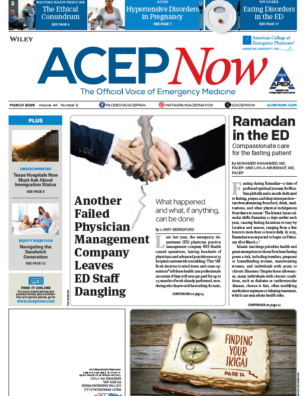A pediatric appendicitis risk calculator (pARC) accurately quantified the risk among children and adolescents presenting to an emergency department with acute abdominal pain, researchers say.
“Until now, the diagnosis of appendicitis in children has heavily relied on diagnostic imaging such as computed tomography,” Dr. Anupam Kharbanda of Children’s Minnesota in Minneapolis told Reuters Health.
“CT scans can put pediatric patients at risk for radiation-induced injuries and unnecessary imaging drives up health care expenditures,” he said by email. “This calculator may help clinicians to make a more accurate diagnosis, thus reducing the use of CT and reducing health care spending.”
Dr. Kharbanda and colleagues developed and validated the calculator through secondary analyses of three cohorts of children who went to a pediatric emergency department with acute abdominal pain. The derivation sample included 2,423 children ages 5 to 18, 40 percent of whom had appendicitis.
The validation sample, derived from two independent cohorts, included 1,426 children ages 5 to 18, 35 percent of whom had appendicitis.
The final pARC model used the following variables to help assess risk: sex, age, duration of pain, guarding, pain migration, maximal tenderness in the right-lower quadrant, and absolute neutrophil count.
As reported in Pediatrics, the pARC exhibited “near perfect calibration” in the validation sample and a high degree of discrimination (area under the curve [AUC]: 0.85; 95% confidence interval 0.83–0.87), outperforming the Pediatric Appendicitis Score (AUC: 0.77; 95% confidence interval 0.75–0.80).
“Importantly,” the authors note, “in our validation cohort with a background risk of appendicitis of 35 percent, the pARC score was able to classify half of patients as [having at least an 85 percent risk or less than a 15 percent risk] for appendicitis, thresholds where surgical evaluation or observation, respectively, may be recommended over immediate diagnostic imaging.”
Only 23 percent of patients would have been identified as having a comparable Pediatric Appendicitis Score of <3 or >8.
Dr. Kharbanda said, “Next steps include a validation of the calculator in community emergency departments in Minnesota, Wisconsin, and California. We are also developing a mobile application to allow for widespread dissemination of our pARC nationally.”
Dr. Shari Platt, chief of pediatric emergency medicine at NewYork-Presbyterian and Weill Cornell Medicine in New York City, commented, “This [calculator] would be very needed, especially for less experienced providers, general pediatricians, and emergency physicians who care for children in acute care settings.”
“A missed appendicitis is one of the most common lawsuits in our field,” she said in an email to Reuters Health, “and having a reliable and validated clinical tool to help guide the evaluation would be very valuable.”
Pages: 1 2 | Single Page





No Responses to “Appendicitis Calculator Quantifies Risk in Children with Acute Abdominal Pain”